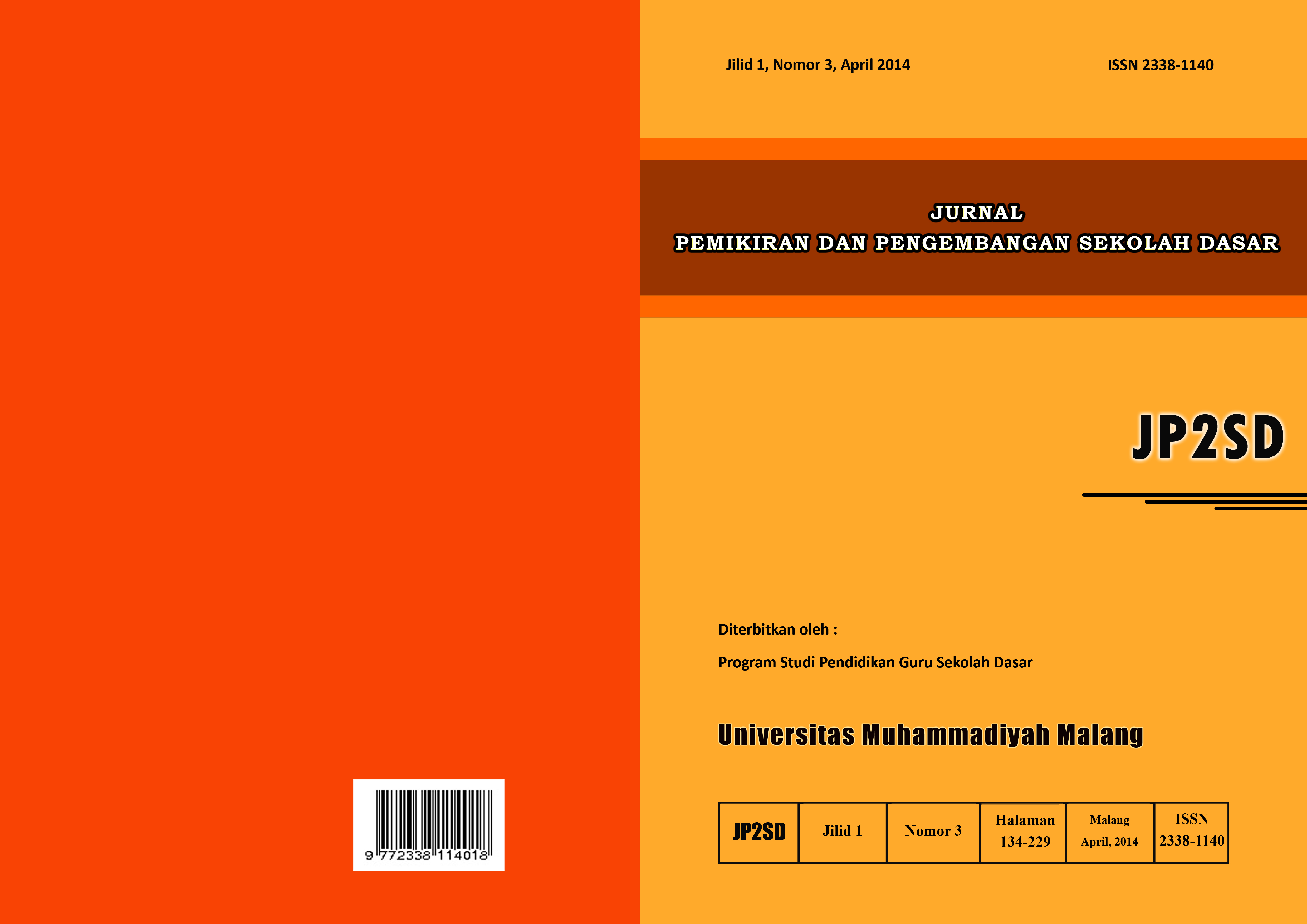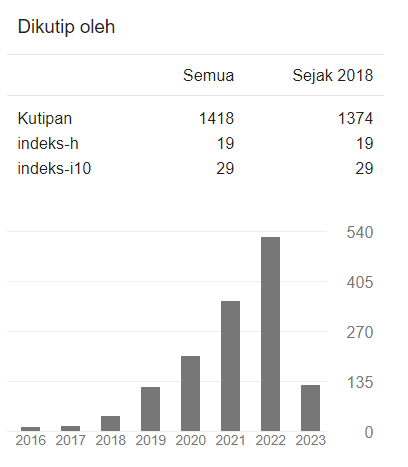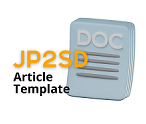INTEGRASI ILMU DI SEKOLAH DASAR (Studi Kasus Kurikulum Terpadu di SDIT Lukman Al-Hakim Surakarta)
DOI:
https://doi.org/10.22219/jp2sd.v1i3.2727Abstract
Abstract: The growing dichotomy in the world of science education today has been split into two faces of education in the extreme polar opposites. On the one hand, there is a general educational institutions under the auspices of the Ministry of Education and Culture. By most Muslims, this institution was branded as a secular institution, because the science is developed far from the values of monotheism. On the other hand, there are religious institutions (adrasas) which is under the Ministry of Religious Affairs. For secular scientists, educational institutions is considered obsolete because science is pseudo science developed. Such polarization would be detrimental to human life due sciences developed in two models of educational institutions are not able to resolve the problems faced by modern man. Secular science without the spirit of monotheism will make man alienated from himself, while the science of religion as such, causes people not able to face the challenges and changing times. Therefore, it takes an alternative educational institution that develops in integrated science, which combines general sciences and theology. The birth of the Islamic Primary School Integrated Lukman al - Hakim is a response to the dichotomy.
Abstrak: Dikotomi ilmu yang berkembang dalam dunia pendidikan saat ini telah membelah wajah pendidikan menjadi dua kutub yang berlawanan secara ekstrim. Di satu sisi, ada lembaga pendidikan umum yang berada di bawah naungan Kementerian Pendidikan dan Kebudayaan. Oleh sebagian umat Islam, lembaga pendidikan ini dicap sebagai lembaga pendidikan sekuler, karena ilmu yang dikembangkan jauh dari nilai-nilai tauhid. Di sisi lain, ada lembaga pendidikan agama (madrasah) yang berada di bawah Kementerian Agama. Bagi ilmuwan sekuler, lembaga pendidikan ini dianggap ketinggalan zaman karena ilmu-ilmu yang dikembangkan bersifat pseudo ilmiah. Polarisasi yang demikian tentu akan merugikan kehidupan manusia karena ilmu-ilmu yang dikembangkan di dua model lembaga pendidikan tersebut tidak mampu menyelesaikan permasalahan yang dihadapi manusia modern. Ilmu sekuler tanpa spirit tauhid akan menjadikan manusia teralienasi dari dirinya sendiri, sedangkan ilmu agama an sich menyebabkan manusia tidak mampu menghadapi tantangan dan perubahan zaman. Oleh karena itu, dibutuhkan sebuah lembaga pendidikan alternatif yang mengembangkan keilmuan secara integratif, yang memadukan antara ilmu-ilmu umum dan ilmu agama. Lahirnya Sekolah Dasar Islam Terpadu Lukman al-Hakim merupakan respon terhadap adanya dikotomi tersebut.
Kata Kunci: Integrasi Ilmu, Kurikulum Terpadu, SDIT Lukman al-Hakim
Downloads
Downloads
Published
Issue
Section
License
Authors who publish with Jurnal Pemikiran dan Pengembangan Sekolah Dasar (JP2SD) agree to the following terms:
- For all articles published in Jurnal Pemikiran dan Pengembangan Sekolah Dasar (JP2SD), copyright is retained by the authors. Authors give permission to the publisher to announce the work with conditions. When the manuscript is accepted for publication, the authors agree to automatic transfer of the publishing right to the publisher.
- Authors retain copyright and grant the journal right of first publication with the work simultaneously licensed under a Creative Commons Attribution-ShareAlike 4.0 International License that allows others to share the work with an acknowledgment of the work's authorship and initial publication in this journal.
- Authors are able to enter into separate, additional contractual arrangements for the non-exclusive distribution of the journal's published version of the work (e.g., post it to an institutional repository or publish it in a book), with an acknowledgment of its initial publication in this journal.
- Authors are permitted and encouraged to post their work online (e.g., in institutional repositories or on their website) prior to and during the submission process, as it can lead to productive exchanges, as well as earlier and greater citation of published work (See The Effect of Open Access).

This work is licensed under a Creative Commons Attribution-ShareAlike 4.0 International License.



















